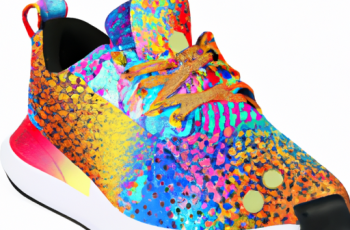Slip-on shoes have become a staple in many people’s wardrobes due to their versatility and easy-going style. But have you ever wondered where these trendy designs originate from? In this article, we will explore the fascinating influence of various global cultures on slip-on shoe designs. From the traditional Japanese geta to the iconic American skateboarding style, you’ll discover how these different cultures have shaped the slip-on shoes we know and love today. So, fasten your seat belts and get ready for a global fashion journey that will leave you amazed and inspired.
Historical overview of slip-on designs
Origins of slip-on footwear
Slip-on footwear has a rich history dating back centuries. The origins of slip-on designs can be traced to various cultures around the world. In ancient times, Egyptians and Greeks developed sandals with basic slip-on features, primarily for their practicality and ease of wearing. These early slip-on designs were usually made from natural materials such as leather or woven fibers.
Evolution of slip-on designs
Over time, slip-on designs evolved and diversified across different cultures. In ancient Rome, for example, citizens would wear a type of slip-on shoe called “solea,” which was typically made from wood or leather. Similarly, in medieval Europe, peasants would wear simple slip-on shoes made from fabric or soft leather. As shoe-making techniques advanced, slip-on designs became more intricate, incorporating decorative elements and materials like silk and velvet.
Cultural significance of slip-on designs
Traditional slip-on footwear in different cultures
Slip-on footwear holds significant cultural importance in various parts of the world. In Japan, the traditional slip-on shoe known as “geta” has been worn for centuries. Geta features a unique elevated wooden sole with a fabric thong strap, providing comfort and stability. In India, the “mojaris” and “juttis” are popular slip-on shoes, adorned with intricate embroidery and often worn during traditional ceremonies and weddings. In many African cultures, slip-on sandals made from local materials like leather or plant fibers play a vital role in traditional attire.
Symbolism and meaning behind slip-on designs
Slip-on designs often carry symbolic and ritualistic meanings in different cultures. In some Native American tribes, moccasins, a type of slip-on shoe, are considered sacred and carry spiritual significance. Similarly, in parts of Africa, slip-on sandals are associated with ancestral heritage and are worn during religious or cultural ceremonies. The colors, patterns, and materials used in slip-on designs can also convey social status, tribal affiliation, or personal beliefs.
Globalization and the spread of slip-on designs
Impact of globalization on slip-on footwear
The emergence of globalization in the modern era has led to the widespread popularity and diffusion of slip-on footwear. As trade routes expanded, cultural exchanges between different regions intensified, allowing slip-on designs to be shared and incorporated into various fashion trends across the globe. The globalization of slip-on footwear has resulted in the adoption of these designs by different communities and the creation of unique hybrid styles.
Adoption of slip-on designs in different regions
With the advent of globalization, slip-on designs have become a global fashion trend, transcending cultural boundaries. For example, the popularity of Japanese “geta” shoes has spread to Western countries, where fashion enthusiasts appreciate their unique style. Similarly, Indian “mojaris” and “juttis” have gained recognition in the international fashion scene for their intricate craftsmanship and vibrant colors. These cross-cultural exchanges have enriched the diversity of slip-on designs worldwide.
Influence of Asian cultures on slip-on designs
Japanese influence on slip-on design
Japanese slip-on designs, such as “tabi” socks and “geta” shoes, have left an indelible mark on the world of footwear. Tabi socks, with their split-toe design, are often worn with traditional “geta” or “zori” sandals. This unique combination provides a comfortable and secure fit while emphasizing the aesthetic appeal of the foot. Japanese slip-on designs have influenced global fashion trends, inspiring designers to create modern interpretations of these traditional styles.
Chinese and Korean slip-on variations
China and Korea also have their own variations of slip-on footwear that have gained recognition internationally. Chinese “slip-ons” or “slippers” feature a closed-toe design, often made from silk or brocade fabrics intricately embroidered with traditional motifs. Meanwhile, Korean “jjokbari” shoes are slip-on shoes with a flat rubber sole and an upper made from colorful fabric. These slip-on variations from China and Korea reflect their respective cultural aesthetics and have found their way into contemporary fashion.
Traditional Indian jutti and its impact
The traditional Indian “jutti” is a slip-on shoe that has become popular globally for its ornate design and craftsmanship. Made from various materials such as leather or silk, juttis are handcrafted with intricate embroidery, beads, and sequins. These versatile slip-ons have made their way into mainstream fashion, with designers incorporating elements of the jutti into modern footwear styles. The jutti’s fusion of traditional Indian artistry with contemporary trends has made it a sought-after fashion accessory.
Western influence on slip-on designs
European slip-on designs
Europe has made notable contributions to slip-on design, particularly through the invention of loafer-style shoes. Loafers, originating in the early 20th century, are slip-on shoes known for their low heel, moc-toe stitching, and a decorative strap across the vamp. Famous European brands like Gucci and Prada have played a crucial role in popularizing loafers as a sophisticated and versatile footwear option for both men and women. European slip-on designs have left an enduring impact on global fashion, exemplifying elegance and refinement.
American influence on slip-on footwear
The United States has had a significant influence on slip-on footwear, particularly in the realm of sports and streetwear fashion. The rise of skateboarding culture in the 1970s brought about the popularity of slip-on sneakers, which offered skaters the convenience of easy on-and-off wear. Iconic American brands like Vans capitalized on this trend, producing slip-on sneakers with durable construction and stylish designs. Furthermore, the influence of hip-hop and sneaker culture in the United States has further propelled the popularity of slip-on footwear, making them a staple in urban fashion.
African and Middle Eastern influence on slip-on designs
Maasai sandals and their global popularity
Maasai sandals, originating from the Maasai tribe in East Africa, have gained international acclaim for their distinctive style and cultural significance. These slip-on sandals feature handcrafted beadwork, vibrant colors, and tire rubber soles. The combination of traditional craftsmanship and unique aesthetics has captivated fashion enthusiasts worldwide. The globalization of Maasai sandals has played a crucial role in promoting African cultural heritage and sustainable artisan craftsmanship.
Moroccan babouche and its modern interpretations
The Moroccan babouche is another slip-on design that has gained popularity outside of its cultural origins. These traditional leather slippers, often embellished with embroidery or metalwork, have been reimagined by designers and incorporated into contemporary fashion. Modern interpretations of the babouche include variations with pointed or square toes and different heel heights, appealing to a wide range of preferences. The allure of the Moroccan babouche lies in its merging of traditional craftsmanship with modern design sensibilities.
Incorporation of indigenous designs in slip-on footwear
Native American moccasins and their influence
Native American moccasins have long held cultural and historical significance within indigenous communities. These soft-soled slip-on shoes, traditionally made from animal hides, play an essential role in Native American culture and rituals. The intricate beadwork, fringes, and patterns found in moccasins represent unique tribal identities and traditions. Today, designers often draw inspiration from Native American moccasins, incorporating elements of their design into contemporary slip-on footwear, paying homage to the rich cultural heritage they represent.
Australian Aboriginal slip-on designs
Indigenous Australian cultures have also contributed to slip-on designs with their own unique styles. Australian Aboriginal communities have a rich history of creating traditional slip-on footwear known as “mudjies” or “ngalmurrik.” These shoes are made from natural materials such as kangaroo or emu leather, featuring intricate patterns and symbolism that reflect Aboriginal Dreamtime stories and connections to land and culture. While traditional Aboriginal slip-on designs are not as widely recognized globally, efforts are being made to promote and preserve these distinctive creations.
Contemporary slip-on designs and their multicultural inspirations
Cross-cultural collaborations in slip-on fashion
In recent years, cross-cultural collaborations have become prevalent in slip-on fashion, merging different design traditions and aesthetics. Designers from various cultural backgrounds collaborate to create unique slip-on designs that combine elements from multiple heritages. These collaborations celebrate diversity, fostering intercultural appreciation and knowledge exchange.
Incorporation of traditional motifs and patterns
Contemporary slip-on designs often incorporate traditional motifs and patterns, paying homage to diverse cultures around the world. For example, slip-on sneakers may feature Native American-inspired beadwork or African textile prints. These designs showcase the influence of different cultures and enable wearers to express their appreciation for global diversity through their footwear choices.
Influence of sports and streetwear cultures on slip-on designs
Skateboarding and the rise of slip-on sneakers
The influence of sports and streetwear cultures on slip-on designs cannot be understated. Skateboarding culture, in particular, played a significant role in popularizing slip-on sneakers. Skaters embraced slip-ons for their practicality, allowing for quick and effortless changes between tricks. Brands like Vans and Converse catered to this demand, creating slip-on sneakers specifically designed for skateboarding. Today, slip-on sneakers continue to be favored by both skaters and fashion enthusiasts alike, offering comfort, style, and convenience.
Hip-hop and sneaker culture
Hip-hop culture has had a profound impact on slip-on footwear, with sneakers becoming an essential component of urban fashion. Slip-on sneakers featuring bold colors, unique patterns, and eye-catching designs have become synonymous with hip-hop fashion. Sneaker collaborations between artists and brands have further popularized slip-on styles, allowing wearers to showcase their personal style and cultural affiliations through their choice of footwear.
Sustainability and ethical aspects of slip-on designs
Adoption of eco-friendly materials
As sustainability becomes increasingly important in the fashion industry, slip-on designs have also embraced eco-friendly materials. Brands are opting for sustainable alternatives such as organic cotton, recycled fibers, and plant-based materials for the construction of slip-on footwear. This shift towards eco-friendly materials aims to reduce the environmental impact of slip-on production and promote responsible consumption.
Fair trade and ethical production practices
In addition to sustainable materials, ethical production practices are gaining prominence in slip-on design. Brands are focusing on fair trade principles, ensuring that workers involved in slip-on production are paid fair wages and operate under safe and ethical conditions. By prioritizing fair trade and ethical production, slip-on designs contribute to the well-being of artisans and workers, fostering a more equitable and socially responsible fashion industry.
In conclusion, the influence of global cultures on slip-on designs is undeniable. From the traditional slip-ons of Asia and Africa to the incorporation of indigenous motifs and patterns, slip-on footwear reflects the rich diversity of our world. As globalization continues to connect cultures, slip-on designs will undoubtedly continue to evolve, adapting to new trends while honoring the traditions and meanings behind each cultural heritage. By embracing the multicultural inspirations and promoting sustainability and ethical practices, slip-on designs have the power to celebrate and preserve the global tapestry of fashion.


